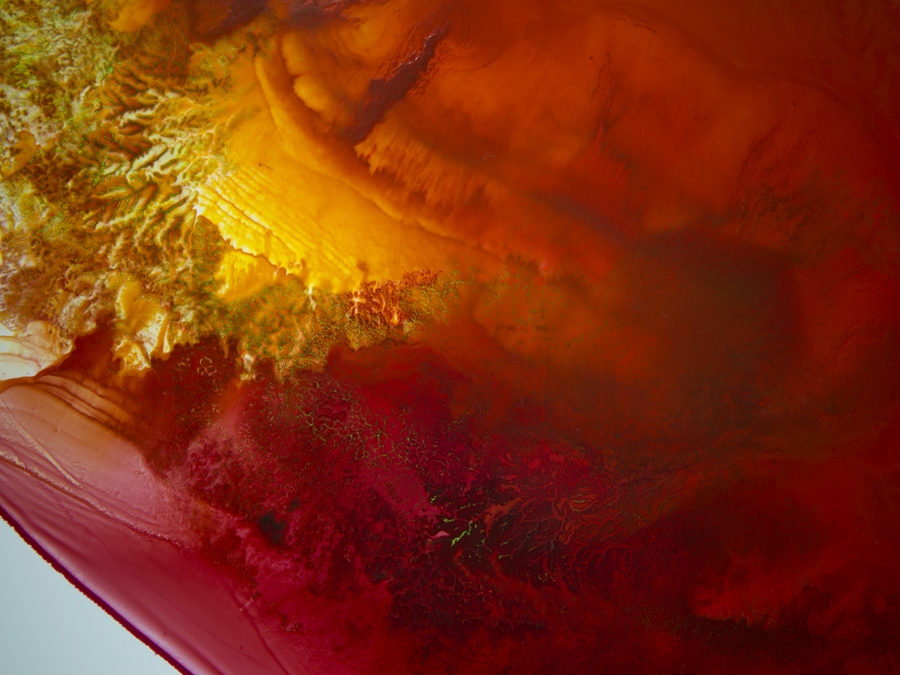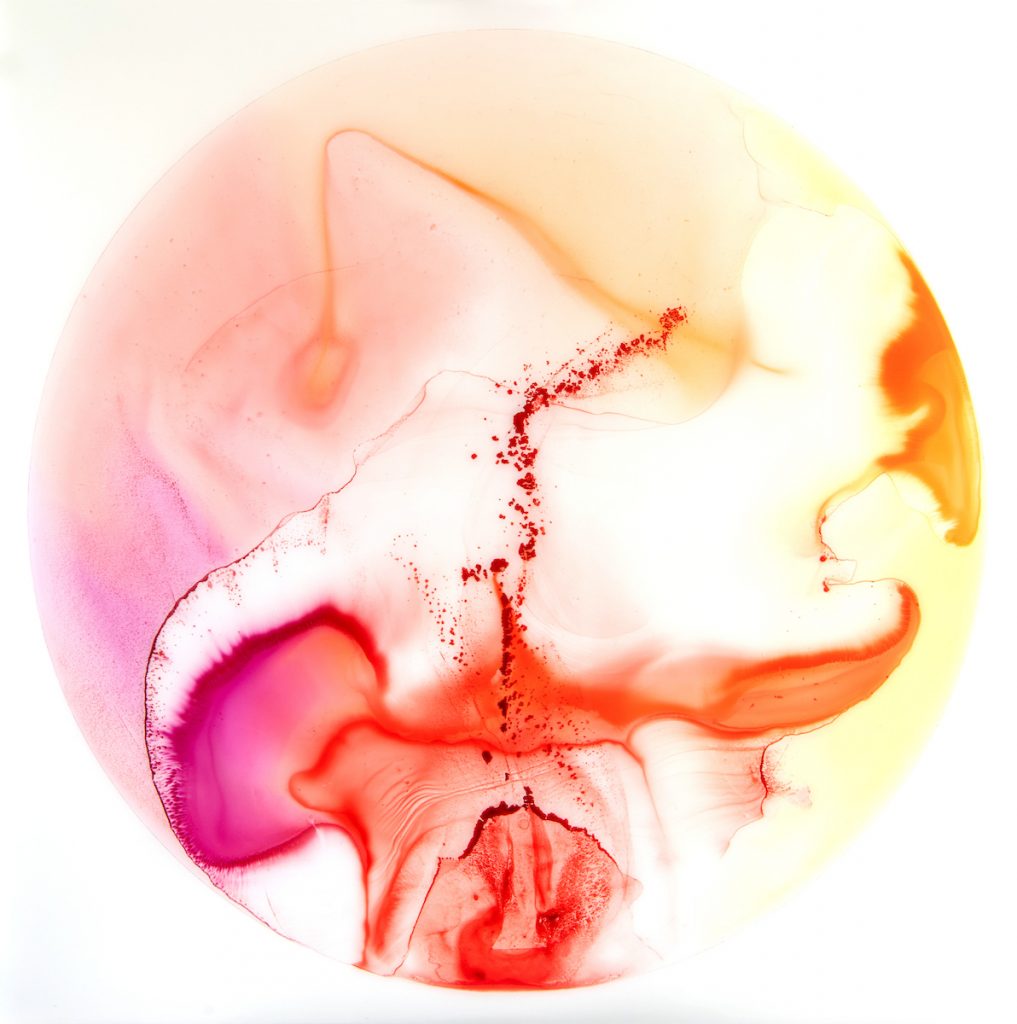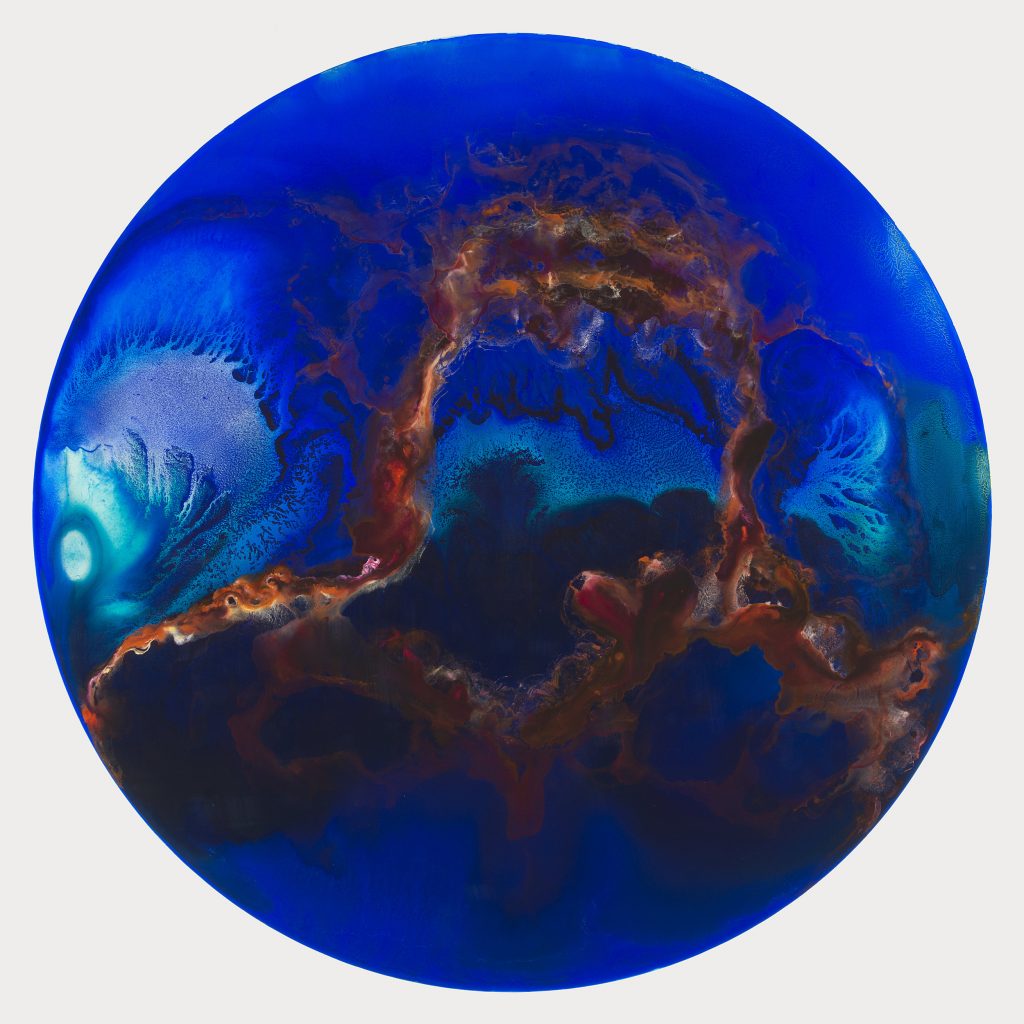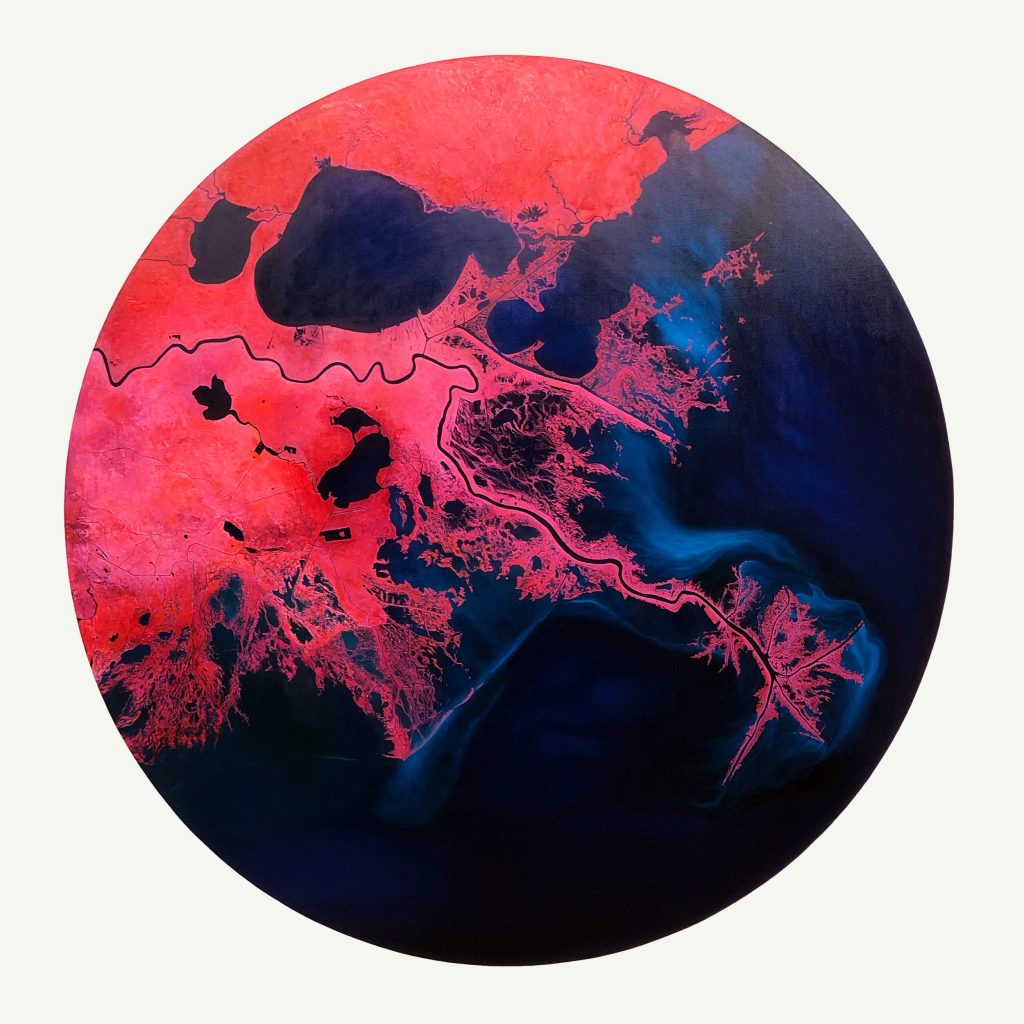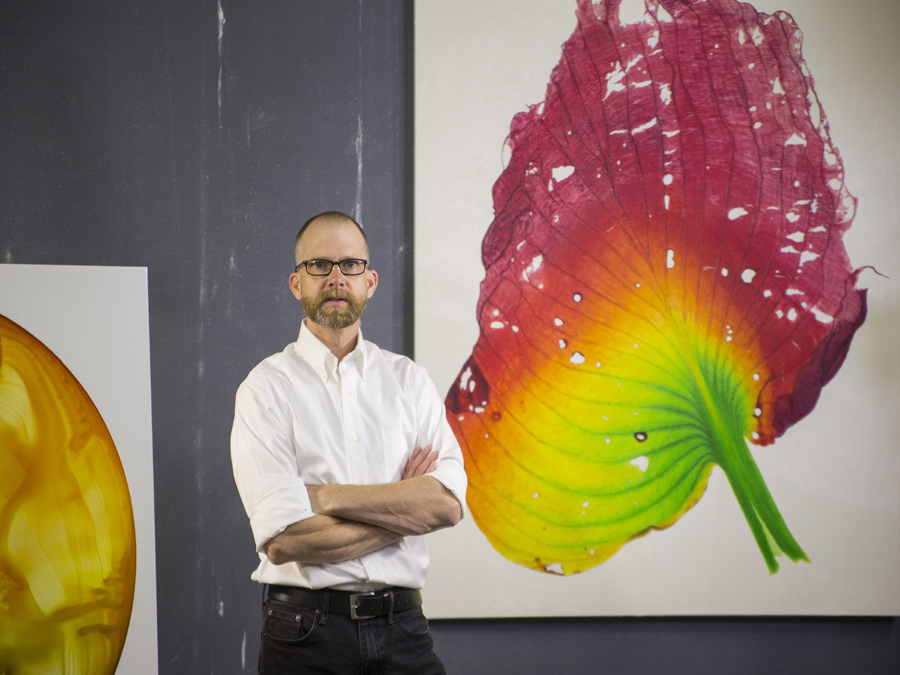by Jane Szita | Frame | June, 26 2016
Born in England, artist John Sabraw was still known as a realist painter when he horrified his agent by producing Chroma, a series of circular abstract works. Made with pigments derived from the toxic run-off that pollutes the coal-mining region of Ohio (Sabraw is an art professor at Ohio University), the pieces underline the theme of environmental activism in Sabraw’s work: he once devised a carbon-offset scheme for artists, which he applied to Leonardo’s Mona Lisa. Sabraw and chemist Guy Rifler, his paint-making partner at Ohio University, have big plans for pollution-based pigments as a means to clean up industrial sites.
What inspired the idea of making paint from pollution?
JS: Ohio has over 4,000 abandoned mines leaking lifeless but dazzlingly coloured mineral streams. I was struck by the amazing colours and wondered if I could work with them. I quickly discovered that environmental engineer Guy Riefler was already using the run-off to make paint, and he asked me to join him.
Is making the paint a simple process?
JS: It’s easy – but making a viable, consistent and stable pigment is hard. We start with containers of polluted water, which vary enormously from site to site. We consulted a paint manufacturer in order to achieve a finer grind and the right pH balance to mix with linseed oil or acrylic compounds.
Is art important in tackling environmental issues?
JS: The science is compelling to those who can process it, but art can connect with people on a more basic, emotional level. It raises awareness and involvement.
These art pieces were inspiring in that not only are they beautiful but they serve a purpose for a greater good. John Sabraw, the artist, is working to clear pollution from the streams, using this run-off he extracts to make paints, and then either sells the paint or uses it to make art of his own in order to spread the message. I liked the idea of using art to not only spread a message but to also actually support the cause you are advocating for.

